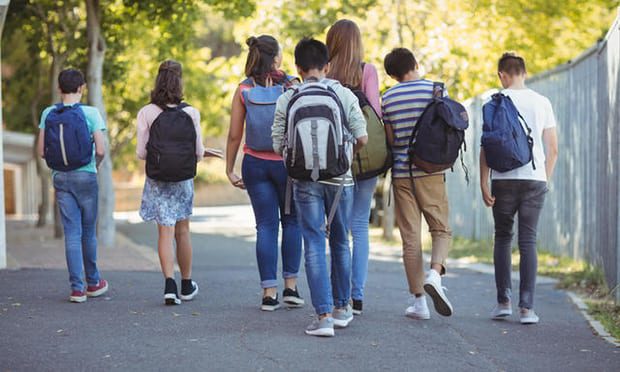Highlights
•Assessed children’s neighborhood extent using wearable cameras and GPS devices.
•We used GPS derived criteria to determine person-centered neighborhood definitions.
•Children spend the majority of their non-school time within 500 m of home.
•Children left their neighborhoods to visit school, residential, food retailers.
•Combined image and GPS data enabled detailed analyses of children’s neighborhoods.
Abstract
Introduction
Defining the boundary of children’s ‘neighborhoods’ has important implications for understanding the contextual influences on child health. Additionally, insight into activities that occur outside people’s neighborhoods may indicate exposures that place-based studies cannot detect. This study aimed to 1) extend current neighborhood research, using data from wearable cameras and GPS devices that were worn over several days in an urban setting; 2) define the boundary of children’s neighborhoods by using leisure time activity space data; and 3) determine the destinations visited by children in their leisure time, outside their neighborhoods.
Method
One hundred and fourteen children (mean age 12y) from Wellington, New Zealand wore wearable cameras and GPS recorders. Residential Euclidean buffers at incremental distances were paired with GPS data (thereby identifying time spent in different places) to explore alternative definitions of neighborhood boundaries. Children’s neighborhood boundary was at 500 m. A newly developed software application was used to identify ‘destinations’ visited outside the neighborhood by specifying space-time parameters. Image data from wearable cameras were used to determine the type of destination.
Results
Children spent over half of their leisure time within 500 m of their homes. Children left their neighborhood predominantly to visit school (for leisure purposes), other residential locations (e.g. to visit friends) and food retail outlets (e.g. convenience stores, fast food outlets). Children spent more time at food retail outlets than at structured sport and in outdoor recreation locations combined.
Conclusion
Person-centered neighborhood definitions may serve to better represent children’s everyday experiences and neighborhood exposures than previous methods based on place-based measures. As schools and other residential locations (friends and family) are important destinations outside the neighborhood, such destinations should be taken into account. The combination of image data and activity space GPS data provides a more robust approach to understanding children’s neighborhoods and activity spaces.
Read the Research
References:
T.ChambersacA.L.PearsonabI.KawachicZ.RzotkiewiczbJ.StanleyaM.SmithaM.barraC.Ni MhurchudL.Signala
- a
- Health Promotion & Policy Research Unit, University of Otago, PO BOX 7343, Wellington South, Wellington, 6242, New Zealand
- b
- Department of Geography, Environment & Spatial Sciences, Michigan State University, 673 Auditorium Road, East Lansing, MI, 48825, USA
- c
- Department of Social and Behavioral Sciences, Harvard T.H. Chan School of Public Health, Harvard University, 677 Huntington Avenue, MA, 02115, USA
- d
- National Institute for Health Innovation, University of Auckland, 261 Morrin Road, Glen Innes, Auckland, 1072, New Zealand

